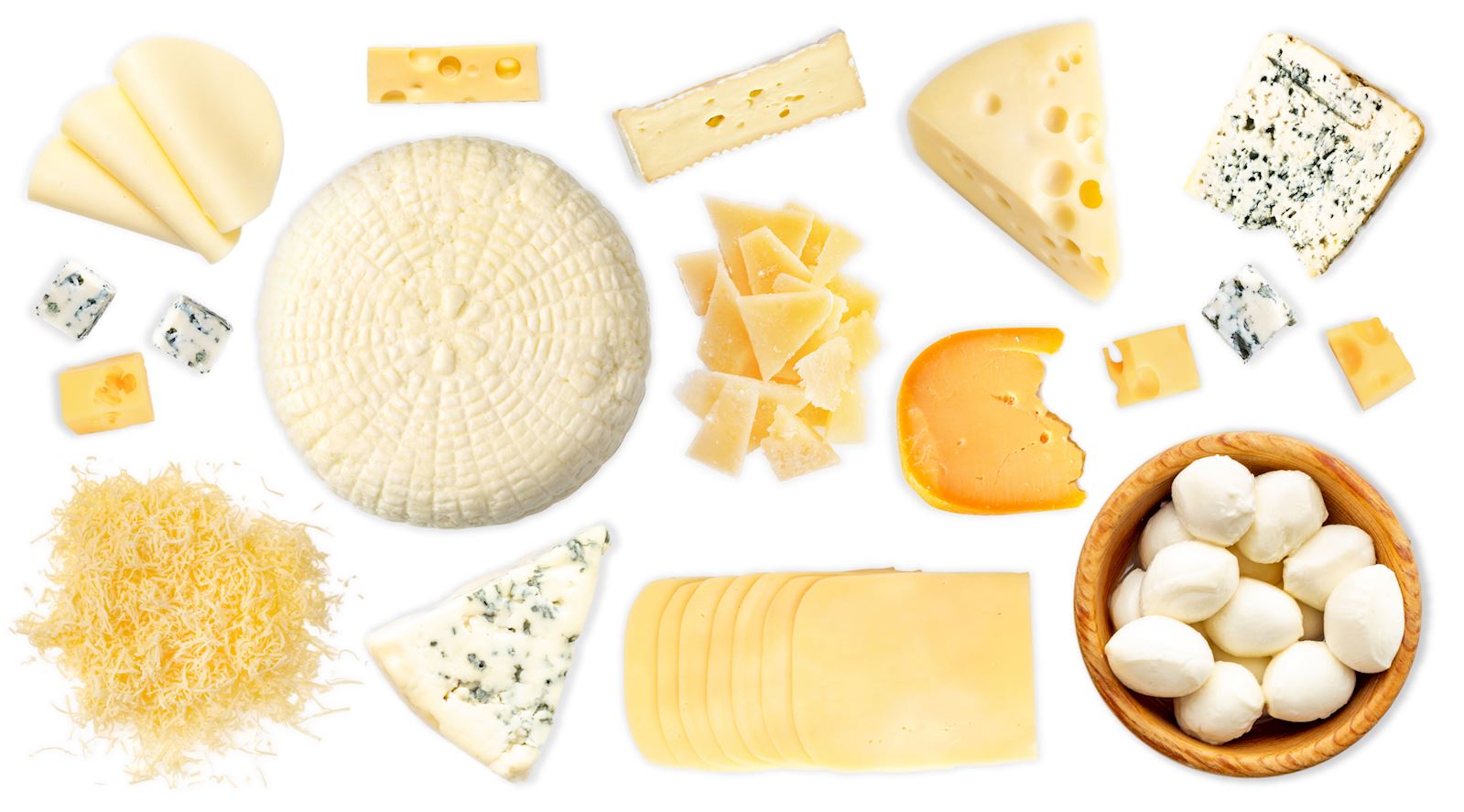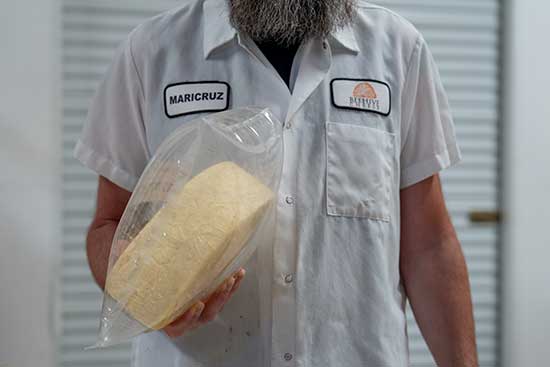
Cheese with a Side of Experiential Learning
Anna Burleson, Marketing & Communications
Professor Michele Culumber stands in a Tracy Hall lab surrounded by WSU students in white lab coats writing what seem like basic instructions on the white board: “1. Swab, 2. Pour, 3. Label.”
The small group of students quickly gets to work examining samples in test tubes.
You wouldn’t know by watching them, but students in Culumber’s microbiology undergraduate research team are studying something universally beloved, delicious and great with crackers: cheese.
Earlier in the day, most of the group had been at local company Beehive Cheese collecting samples for study to find out what’s causing cheese to release carbon dioxide, puffing up grocery store packaging industry-wide and making it difficult to sell.
While unsightly, thankfully, the taste is unaffected.

In 2015, then WSU microbiology professor Craig Oberg BS ’79 discovered the bacteria Paucilactobacillus wasatchensis, the cause of the puffing. Paucilactobacillus is Latin for a genus of lactic acid bacteria, and wasatchensis describes its discovery in northern Utah, at the base of the Wasatch Range. Oberg wasn’t even looking for it, and noticed it purely by chance.
“Most great discoveries aren’t ‘Eureka!’ they’re like, ‘That’s a weird thing; let’s look at it,’” he said.
Culumber has studied microorganisms in groundwater that degrade gasoline, Hawaiian soils, peat bogs, the Great Salt Lake and even tardigrades, more commonly known as water bears.
Intrigued by a new topic, she partnered with Oberg right after his discovery.
“He’s like, ‘I isolated this little bacterium, and I need help figuring out what it is,’” Culumber recalled. “So, we sequenced its genetic material, and it didn’t match up with anything known. It was a new organism, and we just went from there.”
Culumber has been working with students for about eight years since the discovery to figure out how the bacteria make cheese packaging so unappealing and how to stop it.
It’s a slow, methodical process of elimination with many variables.
Students collect samples from wire cutters, vats, drains and even the cardboard boxes where workers get their sanitary gloves, anything that has to do with the cheesemaking process.
Culumber’s running theory is that normally this bacterium would eat five-carbon sugar molecules, but the molecules are not common in cheese, so the bacteria break down six-carbon sugars and release carbon dioxide.
But that’s just a theory.
Culumber said this particular kind of research makes it easy to find students who want to participate because food is very approachable. They also gain experience in every aspect of the project, from planning and research to presenting results.
“Our goal is to provide the students with the opportunity to learn some skills and see if they want to pursue this industry for their careers,” she said.
Brooklyn Matthews, a WSU junior, works with Culumber and plans to graduate in spring 2024. She originally thought she might want to work with animals but has transitioned to studying what she calls “tiny animals,” aka microbiology.
She enjoys researching cheese but also has an interest in epidemiology.
“It’s cool how things spoil, how they infect things and how they spread,” she said as she looked at a test tube containing a small amount of cheese in liquid.
To study every step of the cheese-making process, Culumber also partners with the BUILD Dairy program, which connects students and faculty at universities like Weber State and Utah State University with the dairy industry and farmers for mutually beneficial research.
“If it’s coming in with the raw milk, maybe there’s a way to alter the pasteurization process,” she said. “If it’s coming in from some other contaminant or it’s just in the plant already, then maybe they have to do some different cleaning techniques. Maybe there’s an additive they could use to control it.”
 The ongoing research on Paucilactobacillus wasatchensis has received global attention. Oberg, WSU professor emeritus, presented findings from WSU research on the bacteria at the 14th International Symposium on Lactic Acid Bacteria in the Netherlands in August 2023.
The ongoing research on Paucilactobacillus wasatchensis has received global attention. Oberg, WSU professor emeritus, presented findings from WSU research on the bacteria at the 14th International Symposium on Lactic Acid Bacteria in the Netherlands in August 2023.
“It has been an unbelievable feather in Weber State’s cap,” Oberg said.
Britton Welsh MBA ’16, the president of Beehive Cheese, said the company is proud to partner with Weber State to try and solve this problem.
“It’s not harmful to people; it’s just a little unsightly,” he said.
While Beehive’s cheese is safe to eat up to 80 degrees, Welsh said packaging will start to puff if it gets hotter than 50 degrees for a few hours. This hasn’t impacted profits to speak of so far, but they have to put in extra effort to stay on top of the problem and keep the cheese cool.
“It’s really annoying,” Welsh said. “It’s not bad per se, but it adds a lot of variables to our lives.”
